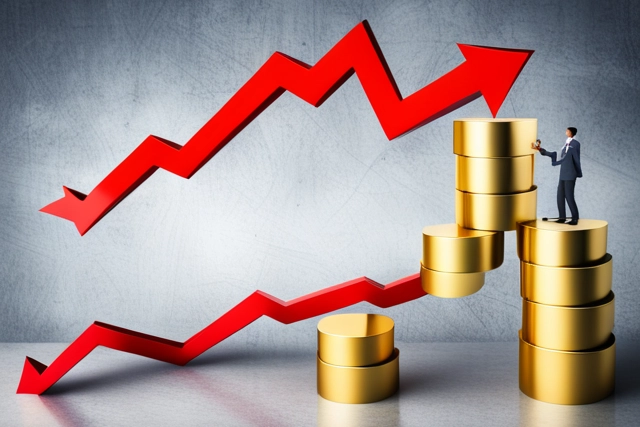
Introduction
In this comprehensive guide, we aim to provide you with in-depth knowledge and insights into gold prices, helping you understand the trends and make informed investment decisions. Gold has always been a highly valued precious metal, serving as a store of wealth and a safe haven asset. Whether you’re a seasoned investor or a newcomer to the world of gold, this guide will equip you with the necessary information to navigate the dynamic landscape of gold prices effectively.
Understanding Gold Price Dynamics
Factors Influencing Gold Prices
Gold prices are influenced by a variety of factors that contribute to their volatility and fluctuations. Some key factors include:
- Supply and Demand: The balance between the global supply and demand for gold plays a crucial role in price determination. Factors such as mining production, central bank reserves, and jewellery demand impact the overall supply and demand dynamics.
- Geopolitical and Economic Factors: Geopolitical tensions, economic stability, inflation rates, interest rates, and currency movements all have a significant impact on gold prices. Investors often turn to gold as a hedge against uncertainties and market risks.
- Investor Sentiment: Market sentiment and investor behaviour can drive short-term price movements. Economic indicators, stock market performance, and changes in global financial conditions can influence investor sentiment towards gold.
Gold Price Measurement Units
Gold prices are measured in various units, including:
- Ounce: The most widely used unit for gold pricing is the troy ounce (31.1 grams). It is commonly used in international markets and financial transactions.
- Gram: Grams are frequently used for smaller quantities of gold, such as jewellery and bullion bars.
- Kilogram: Kilograms are used for larger quantities, such as institutional investments and gold reserves.
Historical Gold Price Analysis
Analyzing historical gold price trends can provide valuable insights into market patterns and long-term performance. By understanding the historical context, investors can make informed decisions based on past price movements. Our interactive charts and historical data analysis tools allow you to explore gold price performance over different timeframes.
The Role of Gold in Investment Portfolios
Diversification and Risk Management
Gold has long been recognized as a key component of diversified investment portfolios. Its unique characteristics make it an effective hedge against inflation, currency devaluation, and geopolitical uncertainties. By including gold in your investment strategy, you can potentially reduce overall portfolio risk and enhance long-term returns.
Different Ways to Invest in Gold
- Physical Gold: Owning physical gold in the form of bullion bars or coins is a popular choice among investors seeking direct exposure to the precious metal. It offers tangible value and the reassurance of holding a physical asset.
- Gold Exchange-Traded Funds (ETFs): ETFs provide a convenient way to gain exposure to gold prices without the need for physical ownership. These funds track the performance of gold and can be bought and sold on stock exchanges.
- Gold Mining Stocks: Investing in gold mining companies allows investors to participate in potential profits from gold production. However, it’s important to carefully assess the financial health and operational efficiency of mining companies before making investment decisions.
- Gold Futures and Options: These financial derivatives provide opportunities for speculative trading based on future price expectations. However, they involve higher risks and are more suitable for experienced investors.
Analyzing the Current Gold Market
Live Gold Price Charts and Tools
Our website offers real-time gold price charts, providing you with up-to-date information on gold prices in multiple currencies. You can track
